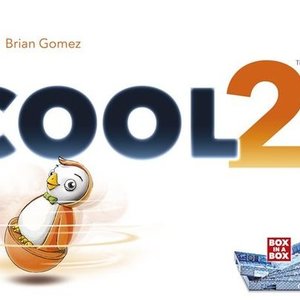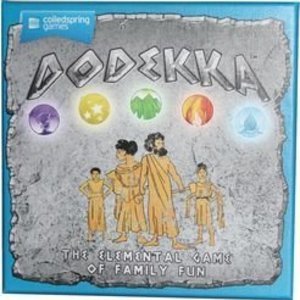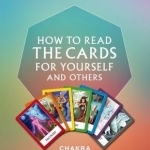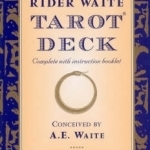
The Original Rider Waite Tarot Deck
Arthur Edward Waite and Pamela Colman Smith
Book
First issued in 1910, the Rider-Waite Tarot is almost certainly the most widely used tarot card deck...
divination meditation
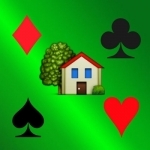
Thuisbridge
Games and Entertainment
App
Playing bridge (cards) at home will be more fun when you're using this app! This app will calculate...

Solitaire Forever
Games and Entertainment
App
Enjoy over 150 solitaire games, with a simple graphic, touch interface. Rich graphics and smooth...

KAUAI LIFE
Food & Drink and Health & Fitness
App
Welcome to KAUAI Download KAUAI LIFE and explore KAUAI's Loyalty and Rewards Program - with many...
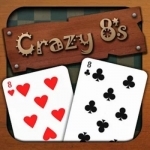
Crazy 8's.
Games
App
Crazy Eights is popular card game. Crazy Eights is played with the standard 52-card deck. The game...
Purple Phoenix Games (2266 KP) rated Dodekka in Tabletop Games
Mar 3, 2021
Dodekka is loosely named after the Greek prefix for 12, Dodeca. Twelve is a big aspect of this game. In it players are attempting to score a large value of cards from one suit while keeping other suits to a minimum, as they are negative points at the end of the game. The player with the most points at the end of the game will be crowned the winner.
DISCLAIMER: We were provided a copy of this game for the purposes of this review. This is a retail copy of the game, so what you see in these photos is exactly what would be received in your box. I do not intend to cover every single rule included in the rulebook, but will describe the overall game flow and major rule set so that our readers may get a sense of how the game plays. For more in depth rules, you may purchase a copy online or from your FLGS. -T
To setup shuffle the main deck of cards and reveal three near the deck. The game may now begin! Note: this may be the easiest setup of any game I have played.
Dodekka is played in turns where each player will take one of a choice of two actions: take a card or add a card. When a player decides to take a card they simply take the card closest to the deck into their hand. Should they wish to add a card the player will simply reveal a card from the deck and add it to the end of the line. Easy, right? Well that’s not much of a game, admittedly. Where’s the catch?
When players add cards to the end of the line they must take care not to increase the total value of the cards within the line past 12. Each suit contains cards numbered zero through four, so adding a card to the line can be quite a gamble if the total value of the cards in the line is already in double digits. Many times players will be forced to take the card closest to the deck out of fear of busting the line total. When a players busts they must take ALL the cards in the line and a new set of three will be revealed to form a new line.
However, there is a catch to this catch. A catch-ception! Should the line bust when adding a card, but the newly added card is of the matching value of the card already at the end of the line (for example adding a three when the last card is already a three) then the bust is delayed until another player brings the total value down by taking a card or busts on a failed gamble.
Play continues in this fashion of players collecting cards of certain suits to earn points or pressing their luck by adding cards to the line until the deck runs out of cards. At that point players will add up the values of the suit with the most points in their hand and subtract the NUMBER of non-scoring cards. Using the photo below for example, should the player choose to score blue they would have five points. However, they would need to subtract the number of cards from the non-scoring suit, which also equals five (two purple cards and three green cards). This will be a net zero score. The player with the most points wins!
Components. This game is a bunch of cards. The cards are all great quality and feature minimal art. The numbering text on the cards are ancient Greek-themed and work for me. I actually like that the art gets out of the way of the cards and allows the numbers and suit colors to shine. Although, I try to be conscious of our colorblind friends and Dodekka is also considerate here by the addition of different art for each suit to help these players be successful. I have no qualms with any of the components here.
All in all, this game is quite similar to another favorite of ours: No Thanks! In each, players are trying to keep away from gaining a bunch of cards that will negatively impact their final scores. Also in each is the element of press your luck that I find simply delicious. You try to wait as long as possible sometimes so as not to get stuck with the bad card(s) but sometimes that gamble blows up in your face. I just love it!
What I like better in Dodekka than I do in No Thanks! is that there is so little to setup that this can be taken almost anywhere and played without any real concern for losing or damaging components. Being solely cards and setup just being a deck with three exposed cards is so simple that players I have introduced to Dodekka are floored that they don’t receive any cards or have anything at setup. It is just refreshing to start a game that can be setup in 10 seconds or less, depending on shuffling skills.
I really don’t want to say this because I love No Thanks! but I may have found its replacement. Dodekka is light, fast, and gives the same level of heart-racing excitement when you need to add a card to the line when it is at 11 already and showing a three at the end. Can you risk pulling a 0, 1, or 3 to remain cool, or will a 2 or 4 be your downfall and cause you to take the lot? It’s wonderful! If you are looking for a small card game that is an excellent little filler and has interesting twists on familiar mechanics, I recommend you grab a copy of Dodekka. Purple Phoenix Games gives this one an under-the-radar 10 / 12. Go grab your trusty dodecahedrons (or borrow mine – my Monk doesn’t use it for anything) and get Dodekka to the table!
Purple Phoenix Games (2266 KP) rated Point Salad in Tabletop Games
Nov 1, 2021
Simply put, Point Salad is a tableau-building game where players are drafting cards with specific scoring rules and sets of the six different suits to maximize the scoring of their drafted score cards. Each card in the game is double-sided, with one side showing a vegetable and the other side showing a unique scoring system. The player who earns the most points at the end of the game will be the winner and be forced to eat a salad reflecting their drafted veggies from the game. All right, that isn’t true, but they CAN gloat as much as they please.
To setup, construct the deck as outlined in the rules per the number of players. Shuffle the deck and roughly divide into three stacks, point side up. From these stacks place out two cards, veggie side up, below them. Choose the first player and the harvesting may begin!
On a turn, the active player may choose to draft one point card or two veggie cards from those visible in the market. They now place the cards in their personal tableau in front of themselves and the turn moves to the next player. The game continues in this fashion of drafting one or two cards every turn until all cards have been drafted.
Once all cards are drafted from the market, players analyze their scoring cards and determine points using the veggie cards they drafted. As each point card depicts a unique scoring set, each player may end with wildly different score totals. The player with the most points is the winner!
Components. This one is easy. It’s a deck of 108 double-sided cards and a tiny set of rules. The cards are all great quality and feature the most clear and appropriate art by Dylan Mangini. I have grown to really love his artwork on different games – I really dig his style. Components in this one are wonderful and I am considering sleeving the game because I just want to keep it pristine through the years.
It is certainly no surprise that I adore this game. Honestly, I only even gave it a shot because my friend Bethany, of Ryan and Bethany Board Game Reviews, placed it in one of her Top 10 lists and I had oftentimes simply passed it up at the FLGS. I am super glad she turned me on to this one, as it is easily one of my new favorites to bring to the table. I do have one tiny issue with the game. The box reads for ages 8+ but my 5-year-old son has zero problems understanding and playing the game. I mean, I have to read (and sometimes explain) the point cards to him, but I love seeing him think about and work through some tactics while playing.
I think that for me and my family, Point Salad fills a nice little niche in my collection. It is an excellent introduction to both drafting and tableau-building that other games can build upon for us. I very much enjoy the possibility of never playing the same game twice as 108 double-sided cards offers such variability and replayability that I hope will keep the game from becoming boring over multiple plays. Right now, though, it is humming along for us, and we are so grateful to Miss Bethany for introducing us to this little gem! Purple Phoenix Games gives this one a delicious 5 / 6. If you are looking for that low-stress, but very tactical, card game for easygoing nights, pick yourself up a copy of Point Salad.
Sassy Brit (97 KP) rated Chakra Wisdom Oracle: How to Read the Cards for Yourself and Others in Books
Jun 5, 2019
Unfortunately, this whole book is built around a set of Tarot style 49 mystical fable cards, revealed to Tori, which do not come with this book. It also focuses on The Chakra Wisdom Oracle Toolkit, which I also do not own. But there is an iPhone app! You can also go online and try them out there for free (an online shuffler).
I really must get these cards… they look gorgeous and after reading all about them I am definitely curious. I also quite like the idea of the toolkit too. Chakra Wisdom Oracle Toolkit: A 52-week journey of self-discovery with the lost fables.
The book itself explains what the cards mean and how to interpret them. You learn about the Great Servant and the 17 Great Spirits of the Council, which all relate to chakra coloured cards, with different aspects and teachings on. It’s written in a concise and well laid out format. There are also some handy quick reference tables to help simplify the teachings, plus reading techniques and meditative journaling are also covered.
With 320 pages, it is quite full on, which in my eyes is a good thing. It doesn’t skimp on detail. Plus, if you visit Tori’s website there are now courses you can take up to train you how to use these cards even further, and more in depth.
I can recommend this book to anyone who is already a fan of spiritual guides and tarot cards, or if this is something that just appeals to you, (there’s a reason for that) just try it out and see. If you’re dedicated enough you can learn so much more by repeated use to better your understanding of what these cards are telling you and how to read them fully.

